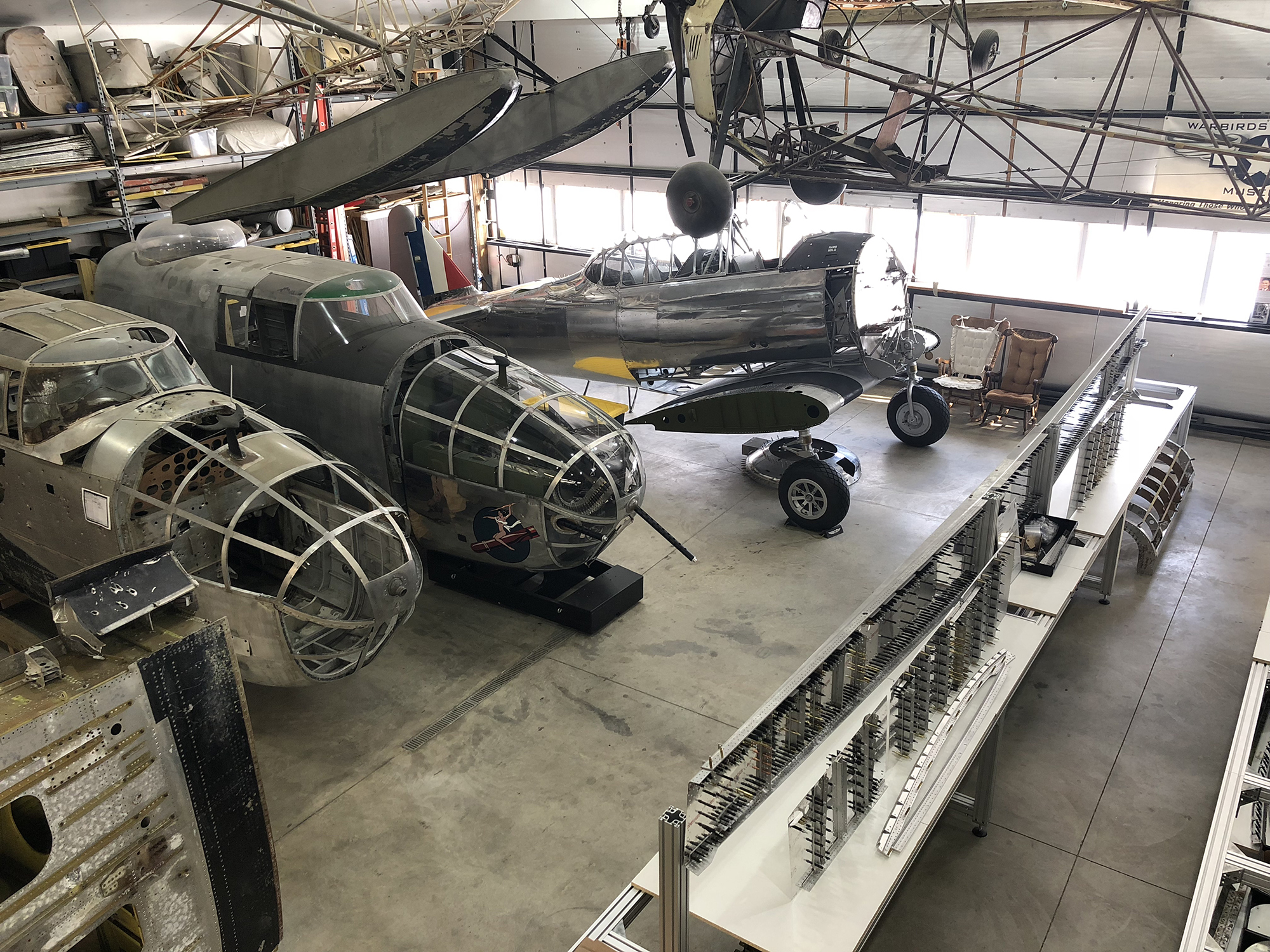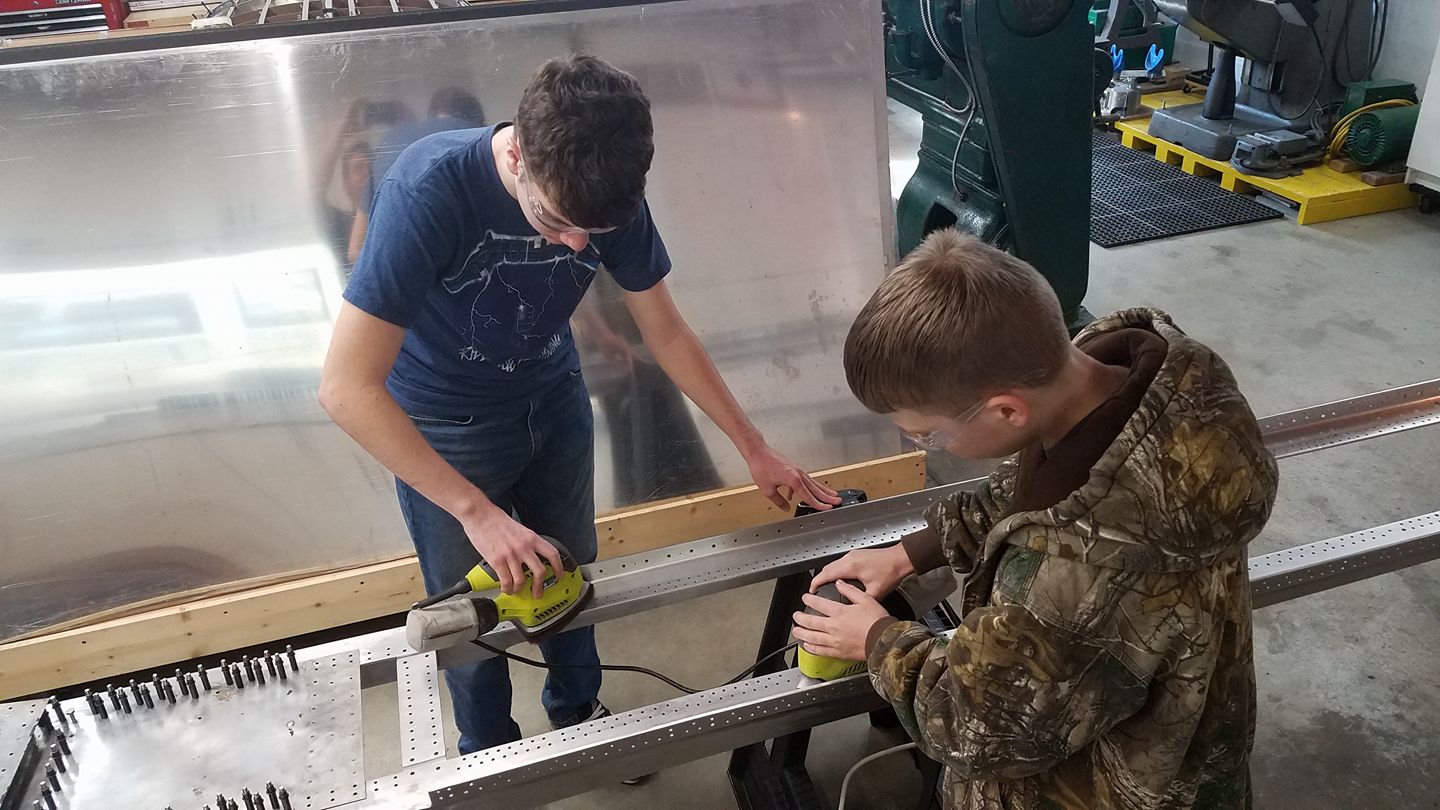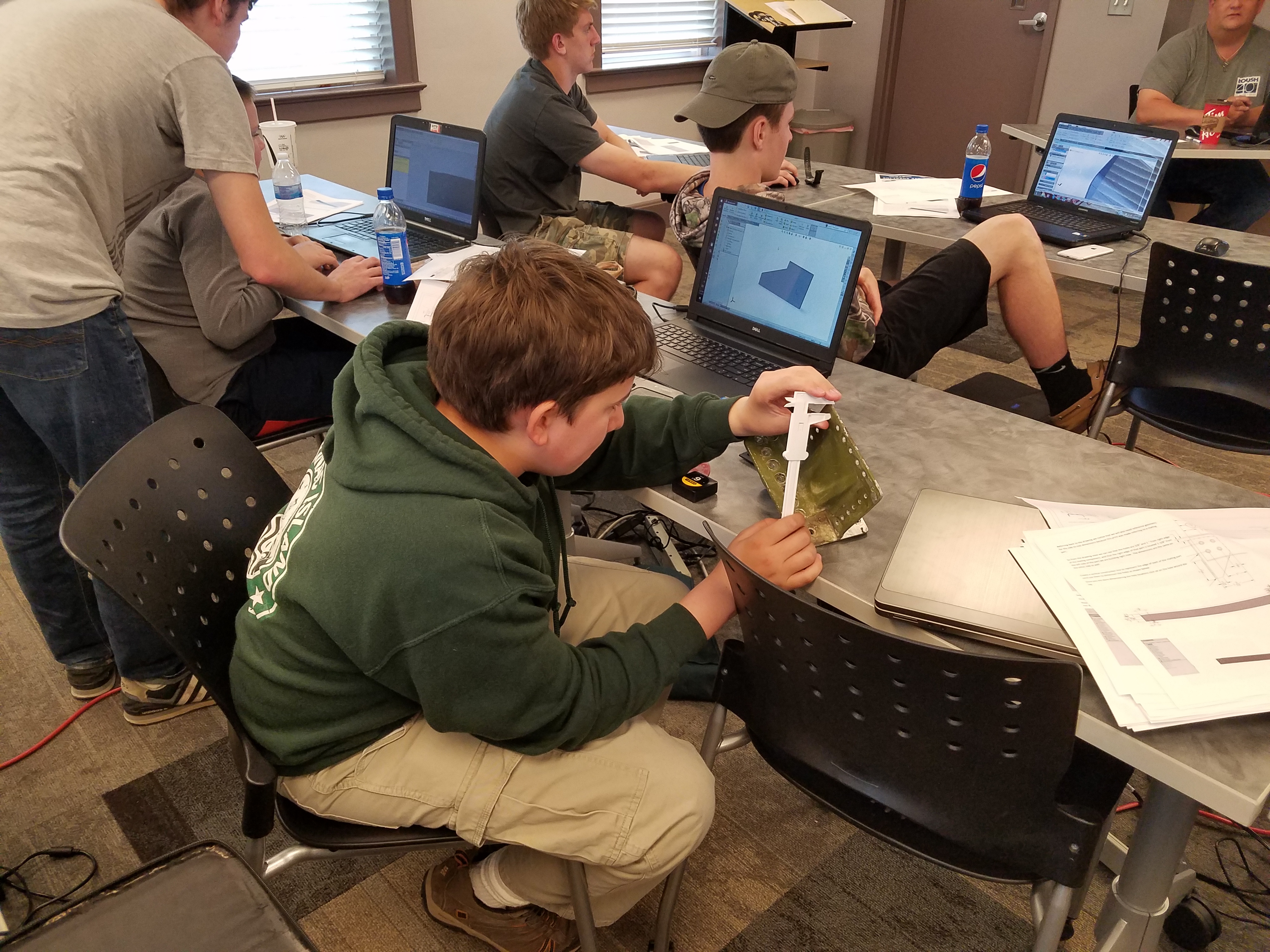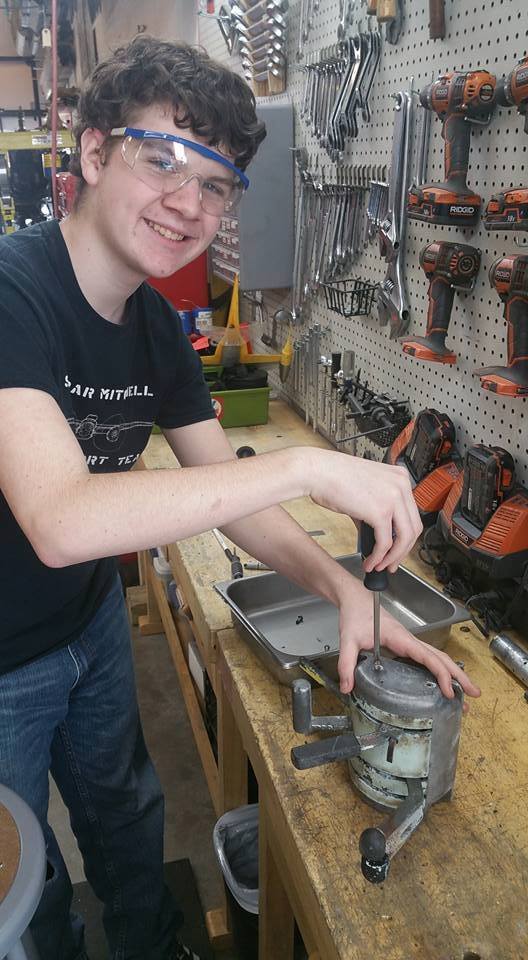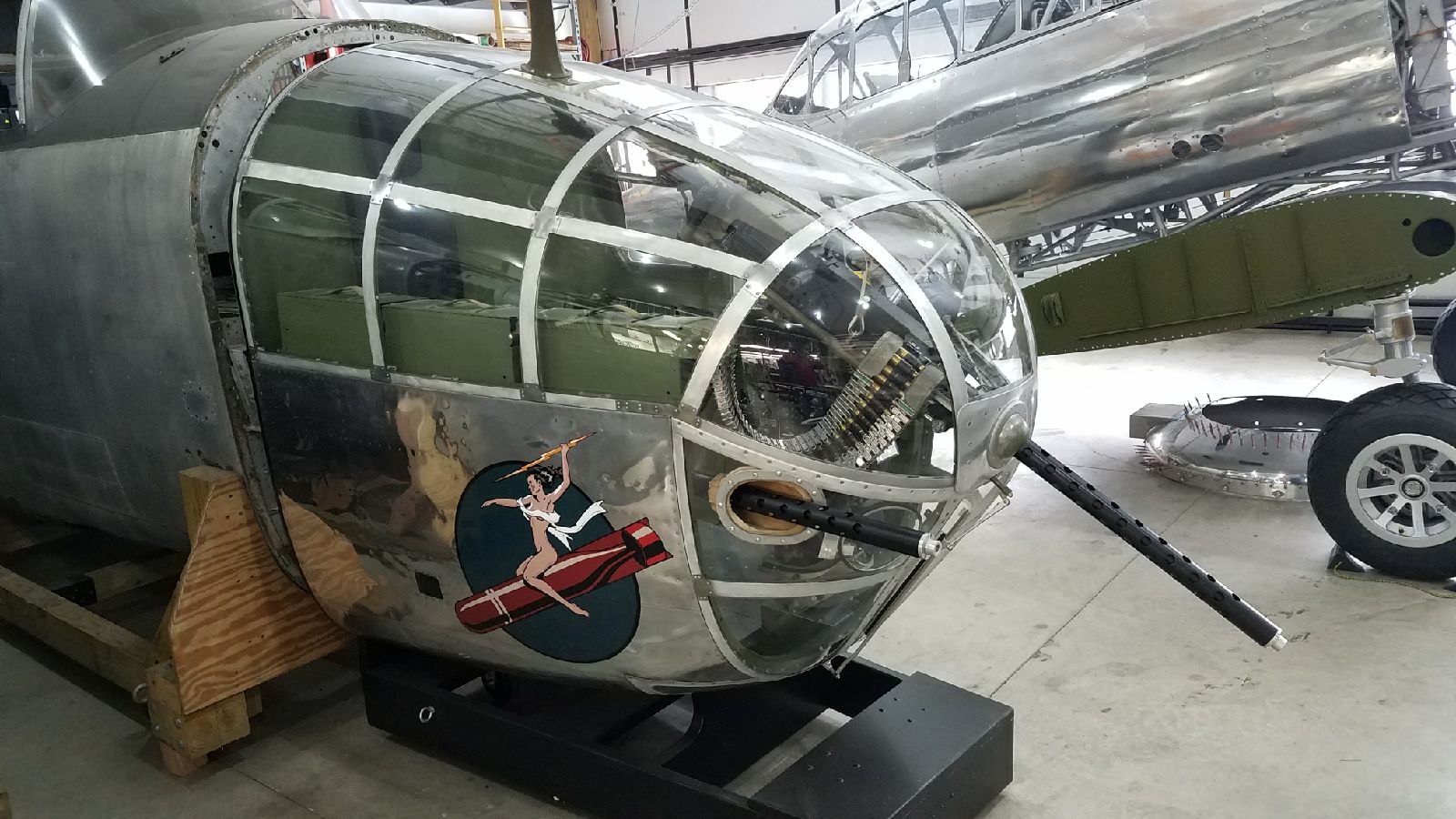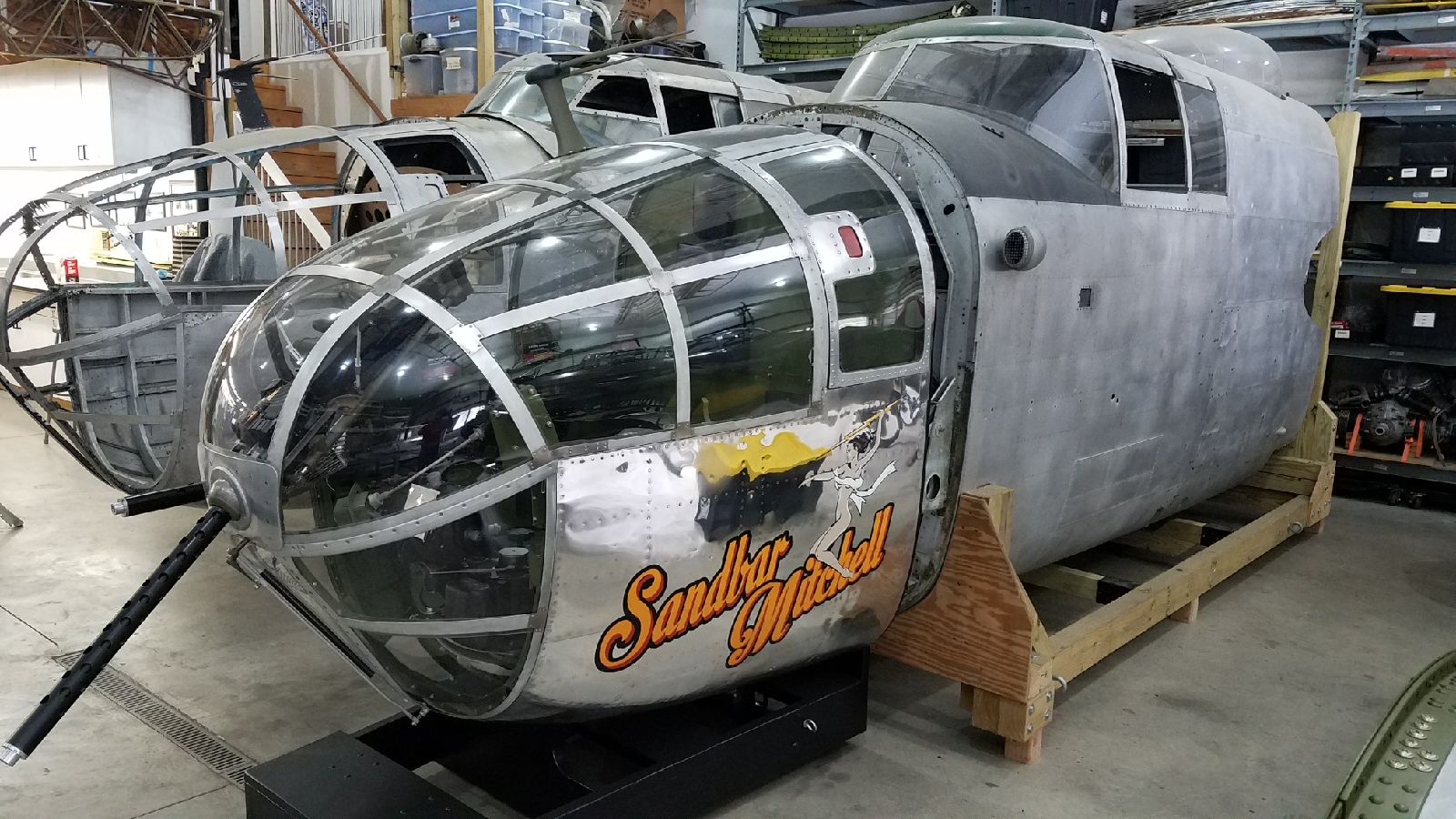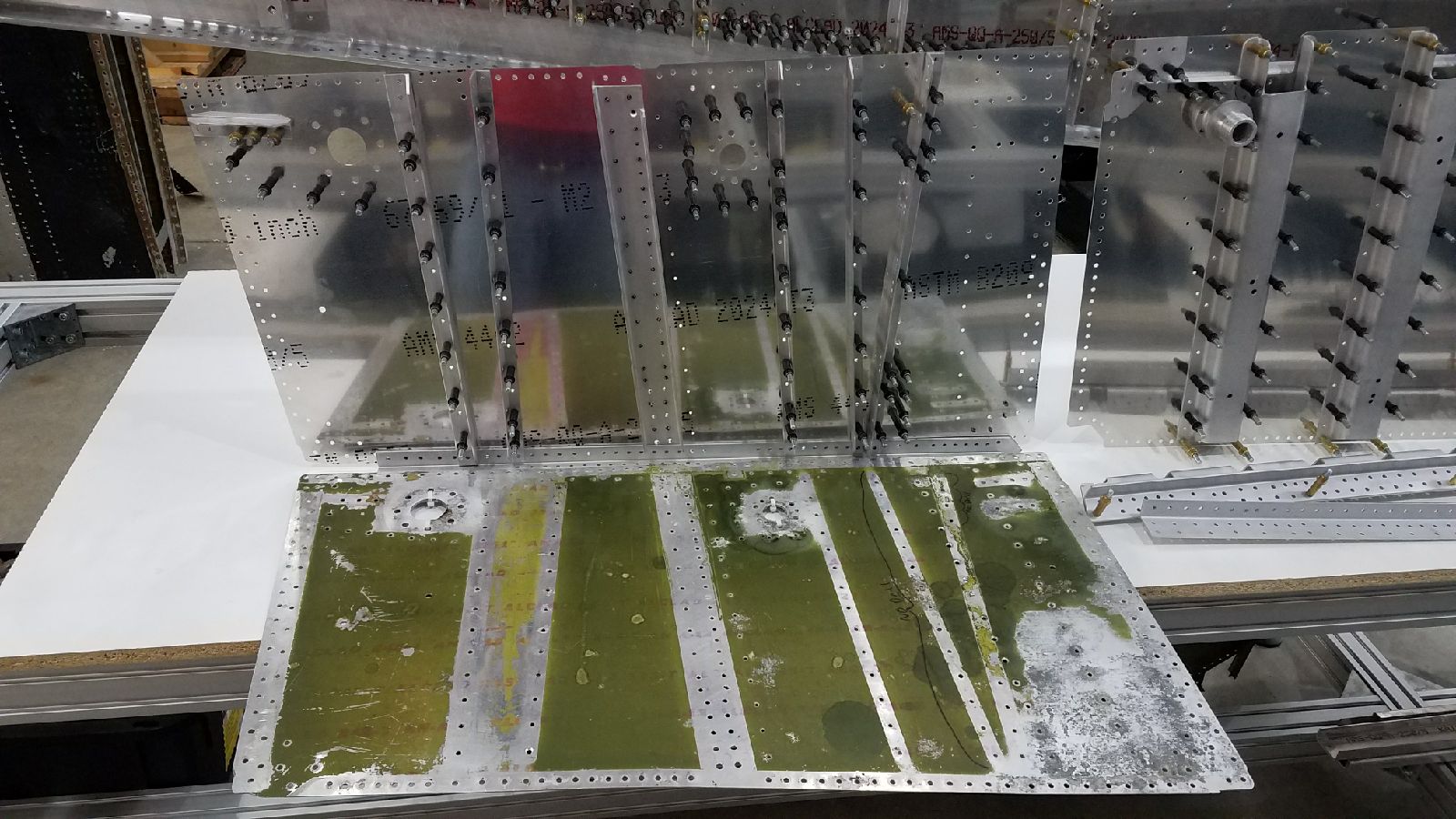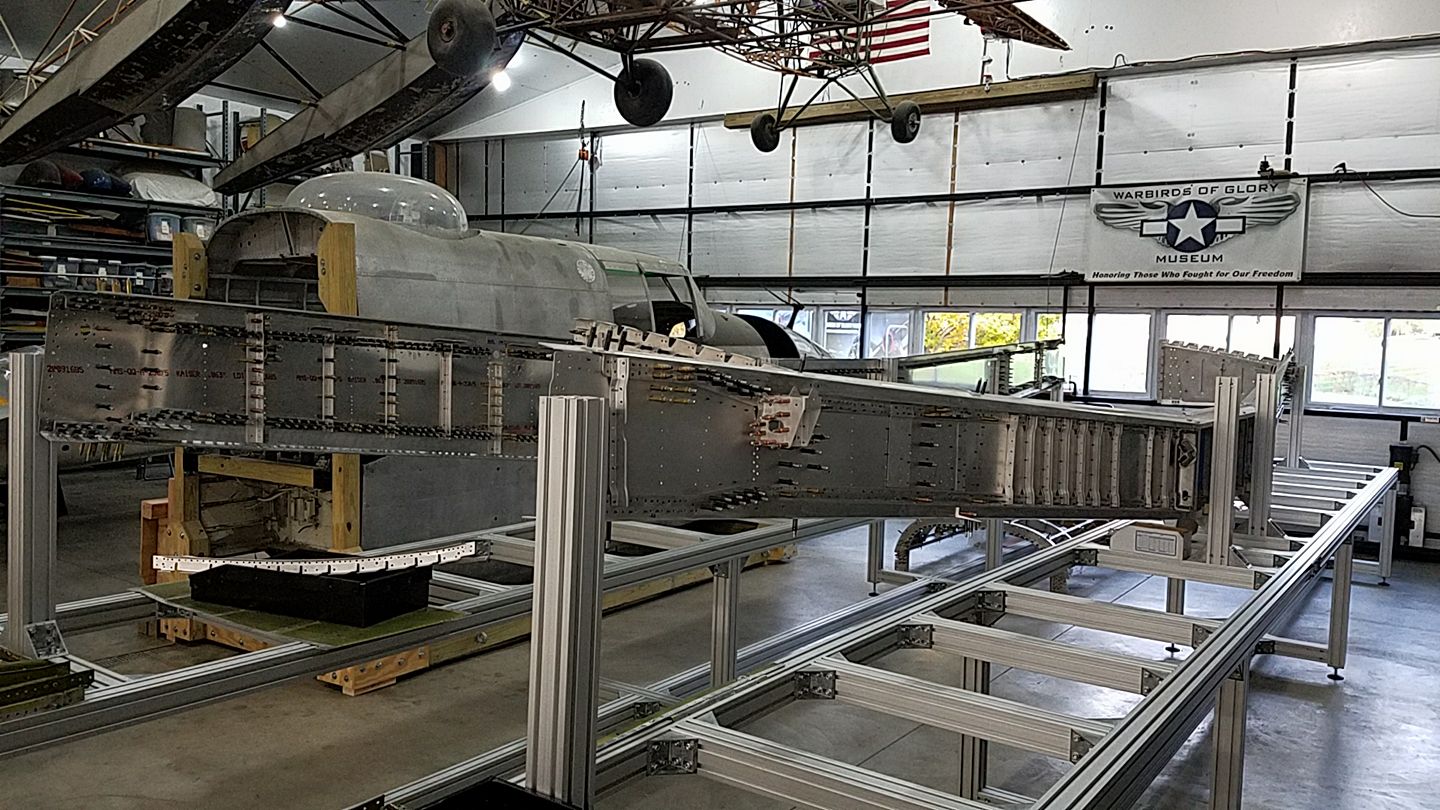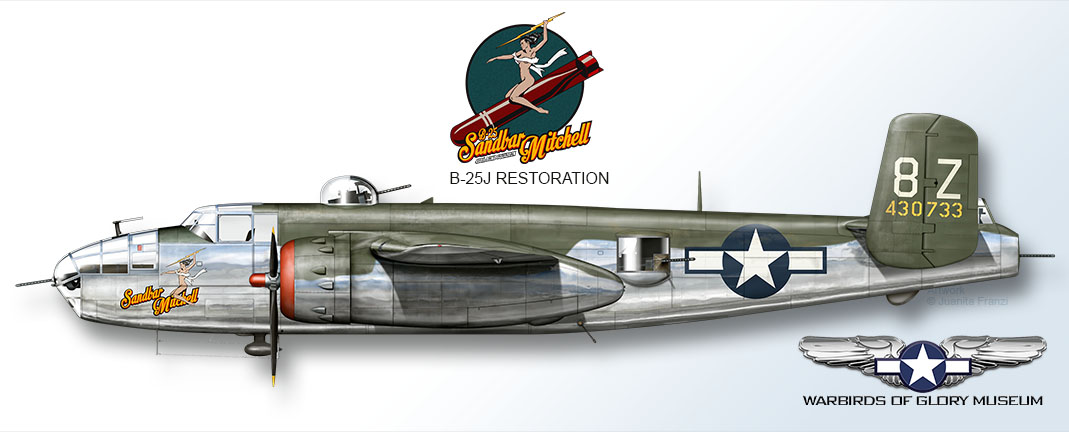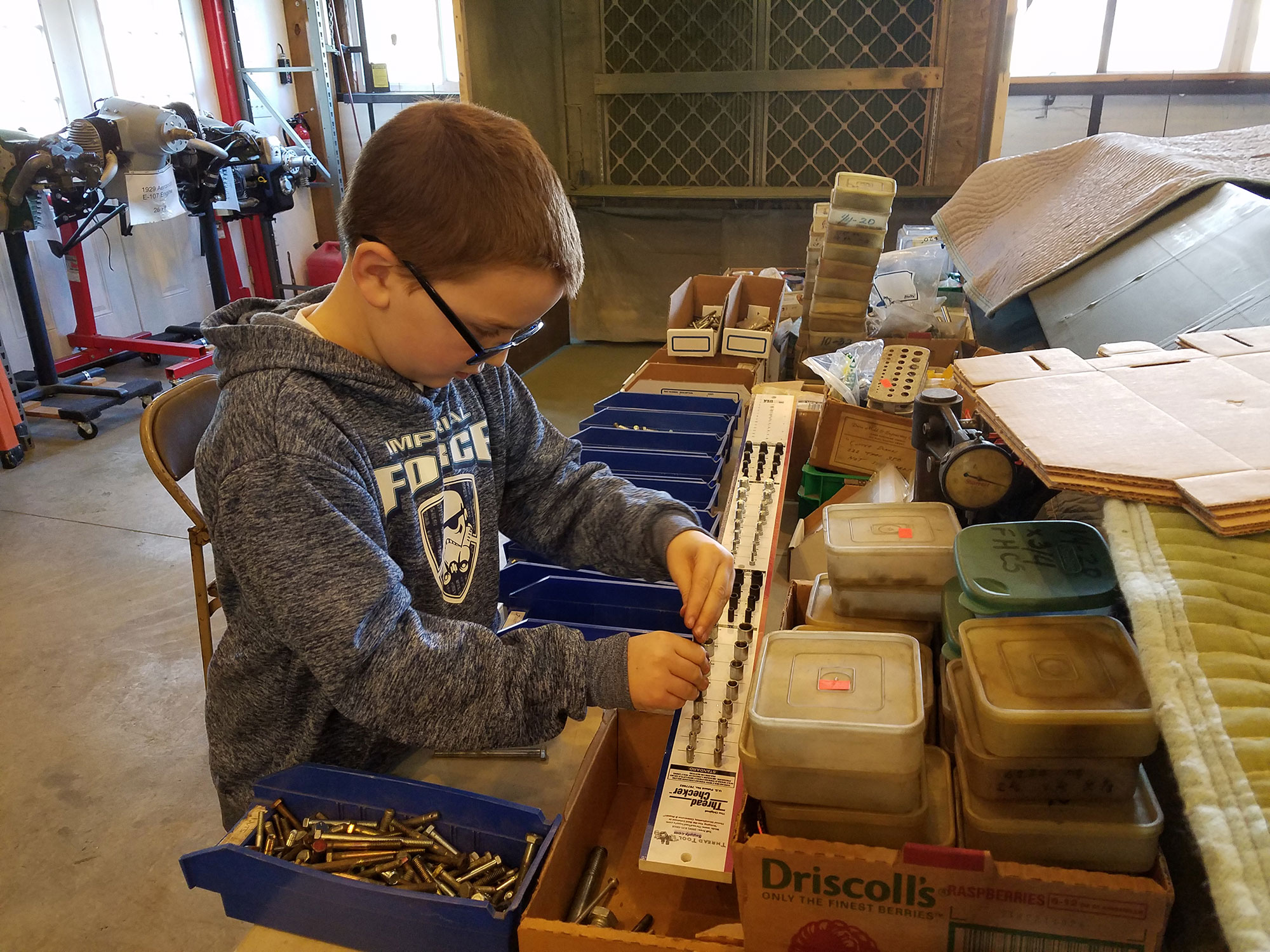Whenever someone asks me why I work at EAA, the answer is the same as it was when I started here six and a half years ago — the devoted passion of those who love general aviation. It’s even more inspiring when someone younger has that passion for something that truly defines their purpose in life. On a last minute trip I took over New Year’s Eve, I got to see that very thing at the Warbirds of Glory Museum, a 501(c)(3) nonprofit in Brighton, Michigan. I first became familiar with the museum and one of its founders, Patrick Mihalek, EAA 529904, when I visited the museum’s booth at EAA AirVenture Oshkosh 2017.
The museum began five years ago when they recovered the B-25 known as Sandbar Mitchell from its crash site. They are currently restoring it to flying condition and are raising money to use it as a flying memorial to honor our veterans. While it was in Oshkosh I helped them create a virtual 360-degree panoramic view of it for people who could not be at the convention. In addition, they are restoring a Lend Lease B-25 Mitchell to static display.
The Warbirds of Glory Museum encompasses so many aspects that are foundations of EAA. What stood out to me most is a significant part of their mission, their youth mentoring program. A program like this is critical to keeping aviation alive and getting young people to participate. Warbirds of Glory is leading efforts on something that is the backbone of EAA, and that’s why I admire their operation so much.
 It’s also impressive to see an incredible organization like this created by a younger person. Growing up, Patrick, who is a certified A&P mechanic, spent many days hanging out at the Brighton Airport after school, which allowed him to become immersed in aviation. He had always loved military aircraft, especially the B-25 Mitchell bomber. At age 12 he became an EAA Young Eagle, and later attended the EAA Air Academy. These valuable opportunities that were available to him ultimately led Patrick into his college degree and career in aviation today.
It’s also impressive to see an incredible organization like this created by a younger person. Growing up, Patrick, who is a certified A&P mechanic, spent many days hanging out at the Brighton Airport after school, which allowed him to become immersed in aviation. He had always loved military aircraft, especially the B-25 Mitchell bomber. At age 12 he became an EAA Young Eagle, and later attended the EAA Air Academy. These valuable opportunities that were available to him ultimately led Patrick into his college degree and career in aviation today.
After college, Patrick reunited with Todd Trainor, EAA 1379, whom he met at the airport when he was 16 years old. Together they started the Warbirds of Glory Museum in 2012. The next summer, Patrick and Todd led a group of volunteers to Fairbanks, Alaska, to recover Sandbar Mitchell.
I wanted to know more about the B-25, so while I was there we talked a little history. This B-25 served as a TB-25 trainer throughout the 1950s before being sold as war surplus. It was bought by Johnson Flying Service of Missoula, Montana, and was converted into a fire suppression bomber.

On June 27, 1969, the B-25 had a multi-engine failure on takeoff from Ladd Field in Fairbanks, and made an emergency gear-up landing on a sand bar. After being abandoned for 44 years, the Warbirds of Glory Museum recovered it in 2013. The restoration will honor the 488th Bomb Squadron of the 340th Bomb Group, as ship 8Z.



The restoration of Sandbar Mitchell is a multi-year project, requiring extensive work. Each section of the aircraft is being carefully disassembled and repaired to the original North American aviation drawings, largely with help from the youth involved in the Warbirds of Glory mentorship program. Currently, the glass nose has been restored and progress is being made on the fuselage center section.



To date, the staff has mentored more than 30 kids, teaching them trade skills, shop discipline, toolmanship, and machining equipment operation, which includes CNC, computer-aided design engineering, and aviation maintenance. The programs at the museum have allowed the students to succeed in school and in their careers, making them better prepared to enter the workforce as adults. Most of the students that have been a part of the museum’s program follow a career in the aviation industry, mechanical skills industry, or engineering.

I’m far from a youth, but while there, Patrick taught me how to buck a rivet because I had never done that before. I saw his passion for teaching these skills first-hand, and it was quite a different experience from pulling a rivet on EAA’s One Week Wonder!
So, what’s next for the Warbirds of Glory Museum? They are expanding the mentorship program to meet the heavy demand for trade skills experience. This month, the museum will launch a curriculum-based workshop mentorship program that recruits adult mentors to work one-on-one with youth to teach them universal workshop skills, the use of tools, and basic aviation trade skills. This program is more easily scalable and is performance-based, which will help prepare the students for school or an actual career.

In February, the museum will be launching a four-weekend, classroom-style SOLIDWORKS CAD Essentials training course. The course is open to people ages 14 to 24 free-of-charge but space is limited to 10 participants. The course is 28 hours of lessons that teach the essentials of 2-D drawing and 3-D modeling. These students will also learn how to read NAA B-25 factory drawings and then model those parts in CAD.
After five years of successful, sustainable operations and increasing support, Warbirds of Glory has outgrown its current facilities at the Brighton Airport. In 2018, the operators hope to break ground on a new facility at the nearby Livingston County Airport. The new facility will allow expansion of the student mentoring programs, as well as a permanent home for Sandbar Mitchell.
Once the B-25 is restored to flying condition, the plan is to always have some restoration project going on at the museum. None of this can be done without critical financial support from the aviation community. Visit their website to learn more about how you can support the Warbirds of Glory Museum, or about their Guardians of History donor program.


